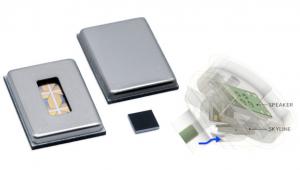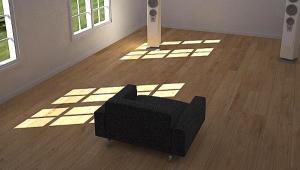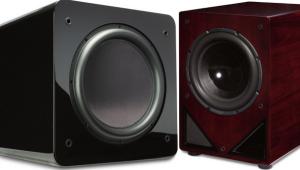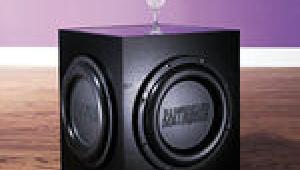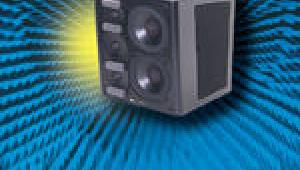Frequency Response: A Show and Tell

I often worry that people get the wrong idea when I praise a speaker for sounding "flat." By this I mean its frequency response is flat, which is a good thing. But if you ask the man on the street, I bet he'd equate flat sound with lifeless sound.
It's high time I explained what frequency response is and why flat frequency response is desirable in audio products. Not only will I explain why non-flat response is bad, I'll demonstrate it to you with some audio files I cooked up just for this article.
What is frequency response?
Frequency response is the way a device responds to different frequencies of sound. To measure frequency response, you feed the device tones of various frequencies, all at the same level. Then you measure the level of each tone as it comes out of the device, and see if all the tones come out at the same relative level.
For example, with a speaker, you might feed it tones at 1/3-octave intervals from 20 hertz to 20 kilohertz (the generally accepted best-case range of human hearing). Then you'd put a microphone in front of it and see how loud each tone is as it emerges from the speaker. If you feed a 1-watt signal into the speaker and every tone comes out of the speaker at, say, 88 decibels, you've got a perfect speaker.
Unfortunately, this has never happened with any speaker in the history of audio. What you actually get with a really, really good speaker is tones between about 80 Hz and 20 kHz coming out anywhere from 86 to 90 dB. With a typical speaker, you'd get the same tones coming out from maybe 83 to 93 dB. With a crummy speaker, or a TV or an iPod dock, you'd probably get tones ranging from 80 to 96 dB - or maybe even worse.
Here are two speakers with essentially flat frequency response: the Revel Salon2 and the Paradigm MilleniaOne. I haven't seen a less-than-glowing review of either one.
With audio electronics - amplifiers, preamps, CD players, digital-to-analog converters, etc. - it's a different story. Feed these devices tones at multiple frequencies and you'll usually get out what you put in. Look at the reviews of amplifiers and preamplifiers in S+V and you'll see that almost all of them have a flat response from 20 Hz to 20 kHz, within maybe +/-0.1 dB. Only the most esoteric audio components, usually employing vacuum tubes, show significant frequency response errors.
Frequency response is shown in a chart such as the one seen in figure 1, with frequency plotted on the X, or horizontal, axis, and level in dB plotted on the Y, or vertical, axis. To plot frequency response, you have to decide on a certain frequency as your reference against which response at other frequencies can be judged. Usually, the reference frequency is 1 kHz, and the output of the device at 1 kHz is set as 0 dBr (the "r" stands for "reference"). Sometimes you'll see speaker frequency response charts that show a response curve plotted somewhere around 90 dB; typically, these are done to show the speaker's output at 1 meter with a test signal of 1 watt (or 2.83 volts at 8 ohms), so you can see the speaker's sensitivity.
